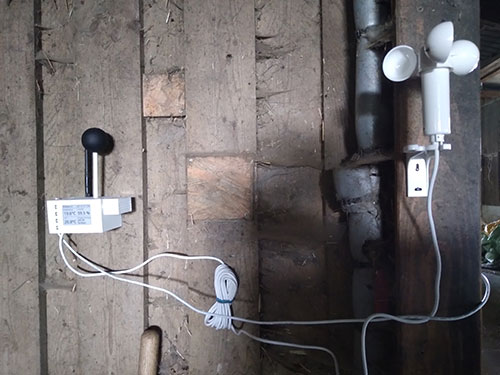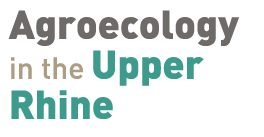Most of the work focused on dairy cows. Indeed, the partners have a large amount of data collected on dairy farms as a basis for their work: health data, milk quality data, spectral data from the analysis of milk samples, etc. The results can be used for other livestock sectors. The results could be of benefit to other livestock sectors.

The optimum temperature for cattle is between -5 and 15°C. Heat periods are therefore particularly critical for heat stress management (drop in feed intake, performance degradation, health problems, animal welfare, etc.).
Microclimatic data in 16 pilot farms (6 in Alsace and 10 in Baden) are collected thanks to the installation of innovative measuring devices: the MobiMets (see photo opposite) and Pessl sensors. These data are used to calculate the THI (thermal comfort indicator) corresponding to the atmosphere in the livestock buildings. These data are completed by the THI outside the buildings, calculated on the basis of meteorological data. The objective is to analyse these two THI (in the building and outside) to quantify the “effect of the building” on the THI and therefore on the thermal comfort of the animals.
In addition, weighing and spectral analysis of milk samples were carried out during the summer of 2022 in order to cross-reference the calculated THI with milk quantity and quality data. The objective is now to study all the data to analyse the impact of heat stress on milk production and animal health.


The first results were presented at the 10th European Conference on Precision Livestock Farming and the 3rd International Conference on Precision Dairy Farming, which took place from 29 August to 2 September 2022 in Vienna, Austria. They were also presented to livestock farmers at technical days.
Further information:
▶ Download the poster presenting the group’s work
▶ Download the recommendations flyer : Heat stress in dairy cows
▶ Discover videos on stable adaptation levers (coming soon)







